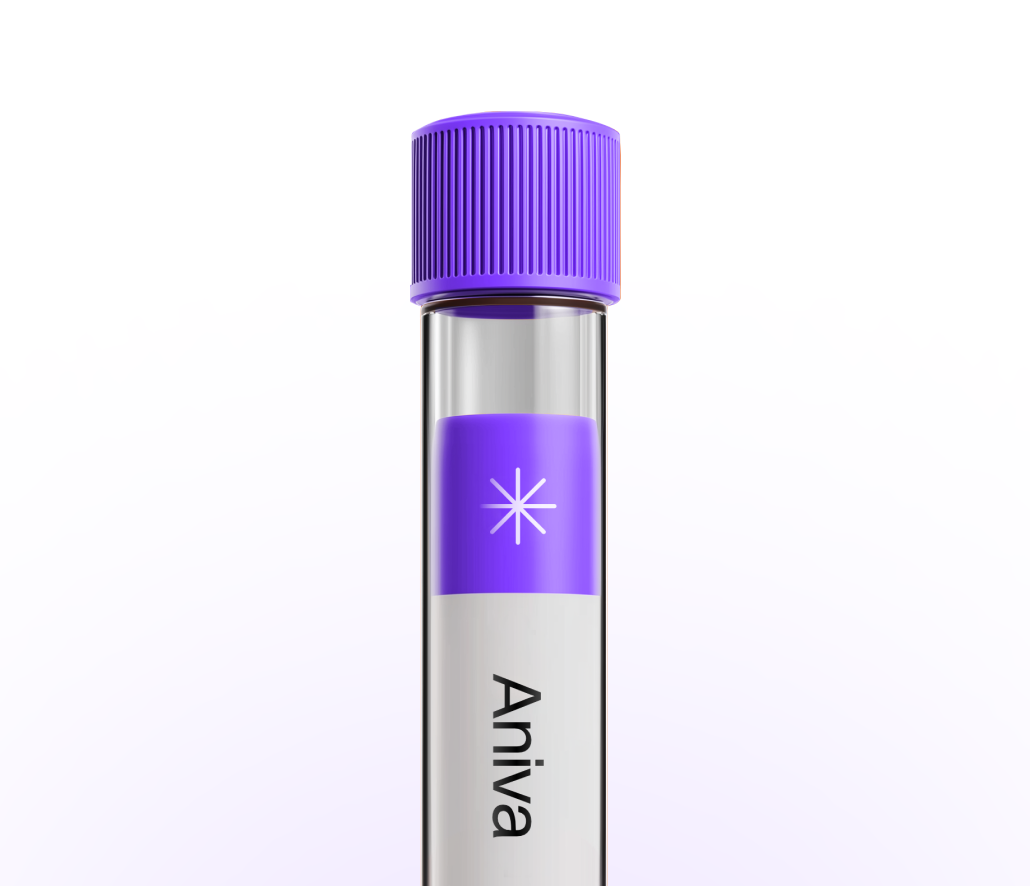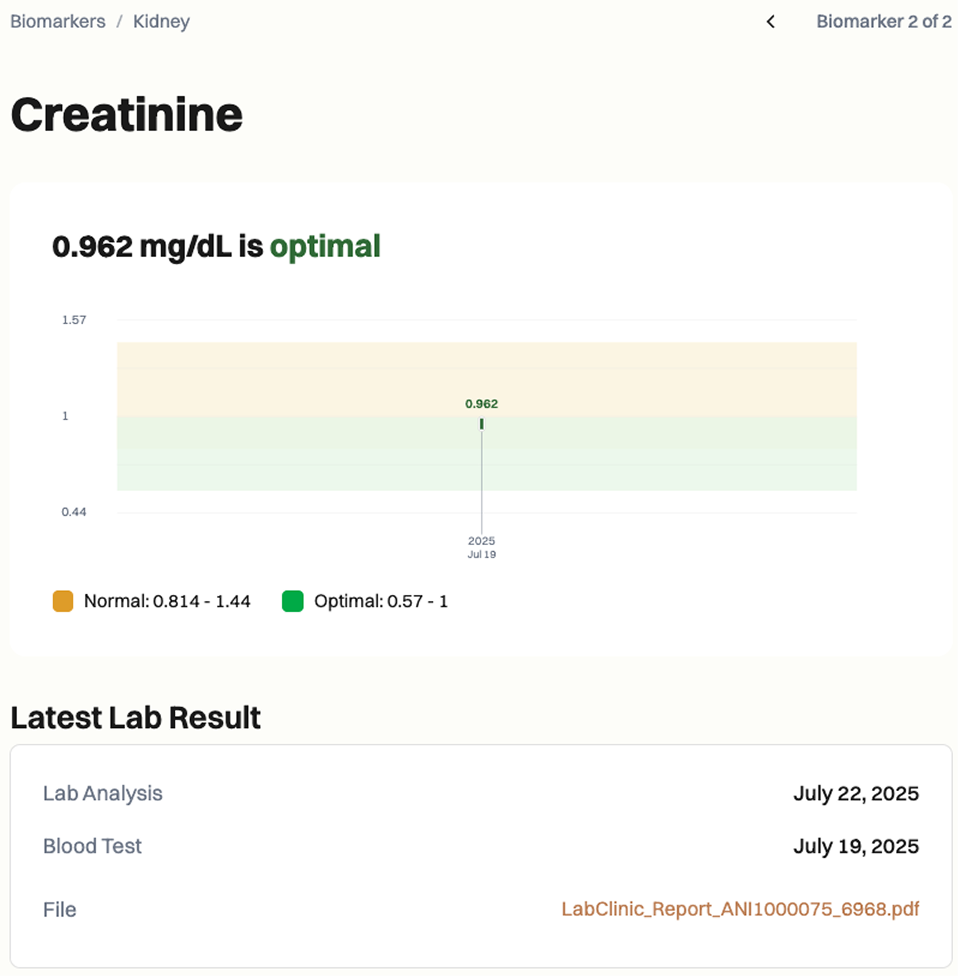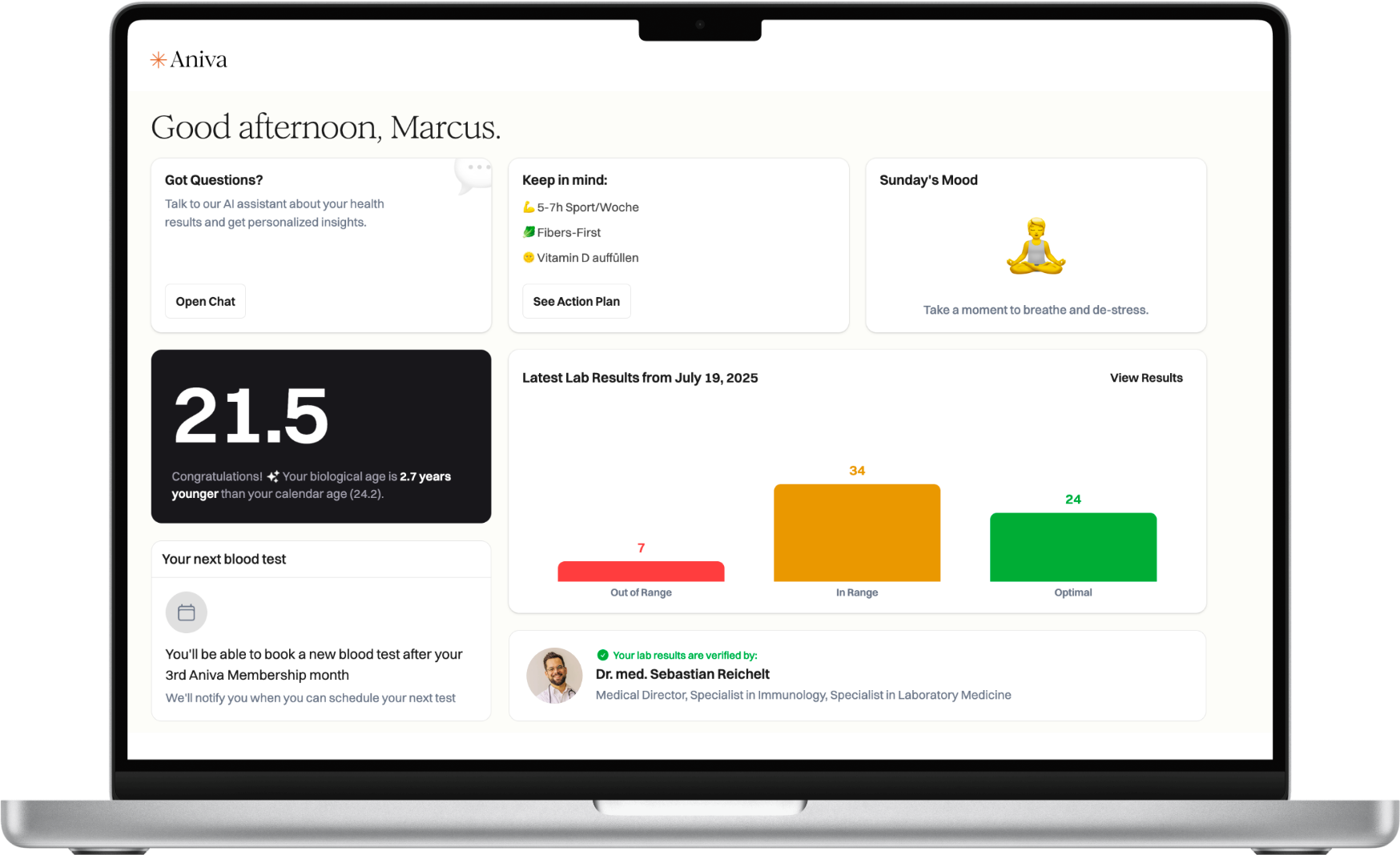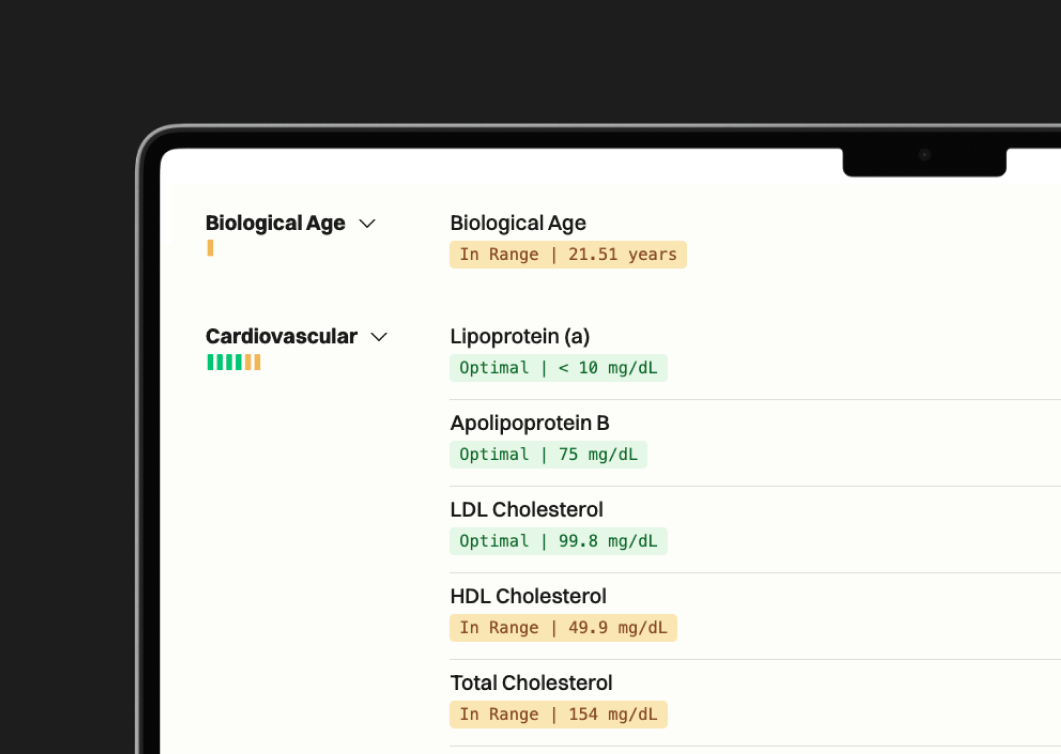Shows the balance between albumin and globulins, giving clues about liver, kidney, hydration, and immune changes.
Securely stored in EU
Cancel anytime
Test 100+ biomarkers

Less than 5 minutes waiting time. One
simple test at one of our 20+ locations.
Get your lab reports within one week.
Accessible on our app and per PDF.
All your health records stored
in a single, convenient place.

Clinicians order the albumin/globulin (A/G) ratio when reviewing abnormal liver results or symptoms like swelling, fatigue, or frequent infections. It helps reveal shifts in protein balance from liver production, immune activity, kidney protein loss, or hydration. Unexpected values often lead to follow-up tests, such as liver enzymes or serum protein electrophoresis. You can test this marker with Aniva across Germany and Finland.
Clinicians order the albumin/globulin (A/G) ratio when reviewing abnormal liver results or symptoms like swelling, fatigue, or frequent infections. It helps reveal shifts in protein balance from liver production, immune activity, kidney protein loss, or hydration. Unexpected values often lead to follow-up tests, such as liver enzymes or serum protein electrophoresis. You can test this marker with Aniva across Germany and Finland.
High: Can occur with dehydration or relatively low globulins, including after steroid therapy or in some immune protein conditions. Recheck hydration and review albumin, globulin, and total protein; if it persists, your clinician may consider serum protein electrophoresis.
Low: May reflect lower albumin from liver issues, kidney protein loss, inflammation, or poor intake, or higher globulins from ongoing immune activity. Pair with albumin, total protein, and liver enzymes to see the pattern. Trends and your full protein panel give the best context. This marker is not guideline-endorsed; no standardized cutoffs.



Common factors that can skew results include dehydration or overhydration, recent IV fluids, pregnancy (hemodilution), acute illness or inflammation, and strenuous exercise. Medicines like corticosteroids, androgens, estrogen therapy, and diuretics can shift albumin or globulin levels. Heavy sweating or poor hydration before the draw may also affect results.
Special situations (when to confirm or adjust): repeat testing after recovery from illness, after stabilizing fluids, during pregnancy, or if you have known immune protein disorders.
What does my A/G ratio mean? It compares albumin to globulins. High or low values suggest shifts in liver function, immune activity, hydration, or protein loss.
Do I need to fast for this test? No. Fasting is not required for the albumin/globulin ratio.
What can affect my result? Dehydration, IV fluids, pregnancy, acute illness, hard exercise, and medicines like steroids, estrogen therapy, and diuretics can change the ratio.
How often should I test it? It’s usually checked with routine panels or to monitor changes. If abnormal, your clinician may recheck within weeks to months.
How long do results take? Most labs report results in 1–3 business days.
What should I discuss with my clinician? Ask what might be driving a high or low ratio and whether to follow up with albumin, total protein, liver enzymes, or serum protein electrophoresis.



One annual blood test (100+ biomarkers)
Clinician-reviewed insights
Personalized action plan
Access to our AI Concierge
Access to curated products


63%
44%
70%